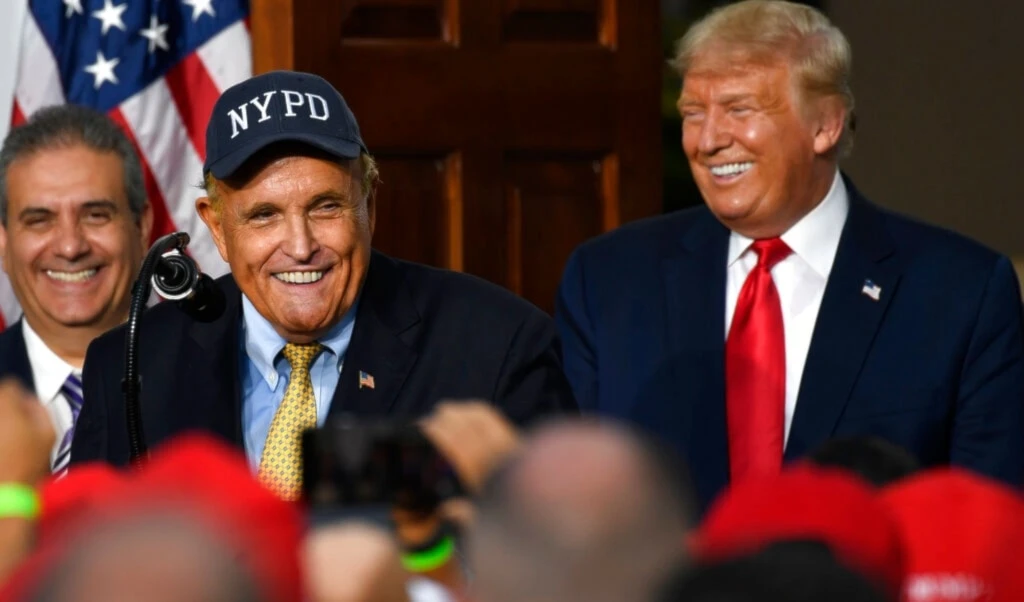West fears China’s hydrogen rise could mirror solar, battery dominance
China’s dominance in hydrogen further undermines Western supply chains as the US and Europe struggle to secure manufacturing and strategic control.
-

A journalist takes a picture of the future transportation powered by hydrogen fuel during an organized media tour at the Daxing International Hydrogen Energy Demonstration Zone in Beijing, China, May 31, 2023 (AP)
China has rapidly moved from technological follower to market leader in the machines that will produce low-emission hydrogen.
Beijing now accounts for the dominant share of global electrolyzer manufacturing, particularly alkaline (ALK) units, and its firms are expanding exports across Asia, Europe, Latin America, and West Asia.
For a country that already leads in solar photovoltaics and electric-vehicle battery manufacturing, control of electrolyzer production is both an economic opportunity and a strategic lever.
Hydrogen technologies can lower the carbon intensity of steel and cement, increase power-system resilience, and create long-duration energy stores that nations will prize as they decarbonize. A Foreign Policy analysis by Jane Nakano and Mathias Zacarias warns that Western innovation risks translating into foreign manufacturing dependence unless policy and industrial planning change course.
Technology, patents, the shifting innovation balance
The technical divide between ALK and proton exchange membrane (PEM) electrolyzers matters for markets and for who wins export contracts.
ALK units are currently cheaper to manufacture at scale, a sector where Chinese producers have amassed capacity; PEM units are more flexible with variable renewables and have historically reflected US, German, and Japanese strengths in membranes and stack design.
But China’s patenting and R&D activity in hydrogen technologies has accelerated, narrowing the West’s early innovation lead in PEM. The result is a fast-moving commercial strategy, based on domestic scale plus rising technical capability, with a clear export ambition.
ALK electrolyzers are particularly suited for industrial applications due to their lower cost and longer operational lifetimes compared with PEM units. This makes ALK units ideal for green steel production, where hydrogen can largely replace coal in the direct reduction of iron (DRI) process, producing water (H₂O) instead of CO₂. Some coal may still be required for alloying or specialized steel grades, but overall emissions are drastically reduced.
Read more: China’s green strategy redefines Latin America’s global dev. role
Western policy weakness, market fragility
The United States retains significant technological assets and financial tools under the Infrastructure Investment and Jobs Act (IIJA). Yet those instruments have not translated into a resilient domestic supply chain. Project cancellations, uncertain implementation, and weak near-term demand signals threaten to leave newly built factories underused, according to Foreign Policy's report.
Europe has already responded with industrial safeguards, including resilience requirements in hydrogen auctions that limit Chinese-sourced electrolyzer stacks for certain subsidized projects to 25%, but Brussels’ measures underline a wider anxiety.
The West risks leading in laboratories while ceding manufacturing dominance to a state-backed competitor, a pattern China has repeatedly capitalized on to secure strategic victories.
Read more: VW, German Aumovio receive Nexperia chips after China eases export ban
Geoeconomic stakes and a pragmatic response
From the West's perspective, a concentrated electrolyzer supply chain controlled by a single country risks political leverage and supply fragility at a moment when hydrogen will be central to decarbonizing “hard to abate” industries and to building strategic hydrogen trade.
Nakano and Zacarias argue for a dual approach. First, governments should catalyze anchor projects where demand is durable, petrochemicals, steelmaking, and industrial offtakes, to create consistent ordering that supports local factories. Second, Western states must pair R&D leadership with targeted industrial policy. This includes scaling manufacturing, underwriting exports through finance institutions, and mobilizing diplomatic procurement to ensure allies buy trusted technology rather than defaulting to cheaper imports.
Yet, China’s rapid industrial scaling, export push, and growing patent portfolio mean the window for shaping a diversified global hydrogen supply chain is closing.
As Nakano and Zacarias put it, unless the West couples innovation with deliberate manufacturing and export strategies, it risks repeating past mistakes, and ceding another critical segment of the clean-energy transition to Beijing.
Read more: US clean hydrogen push faces another major setback

 4 Min Read
4 Min Read










